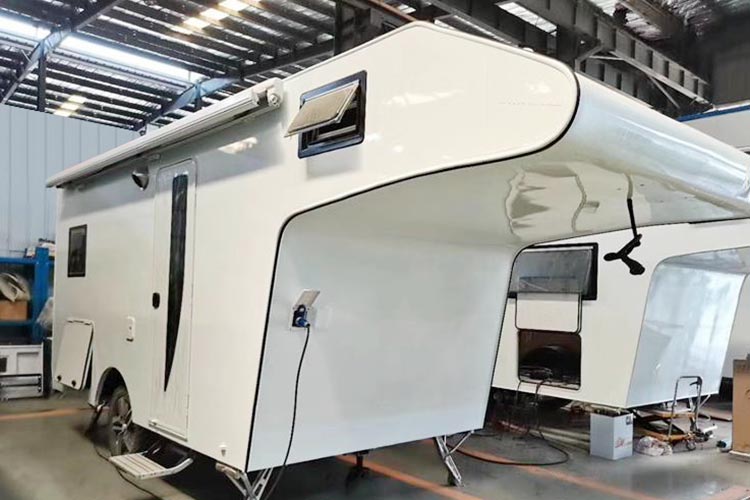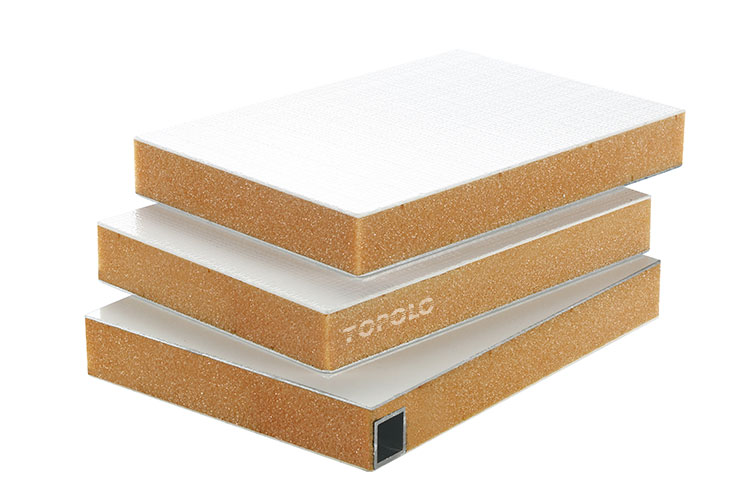
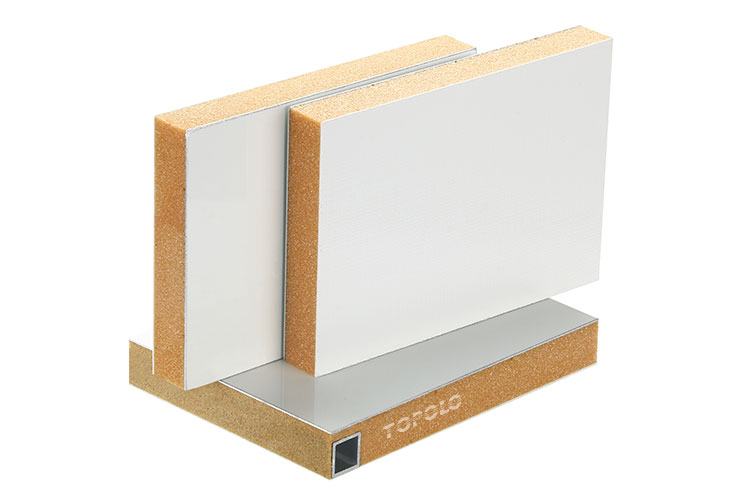
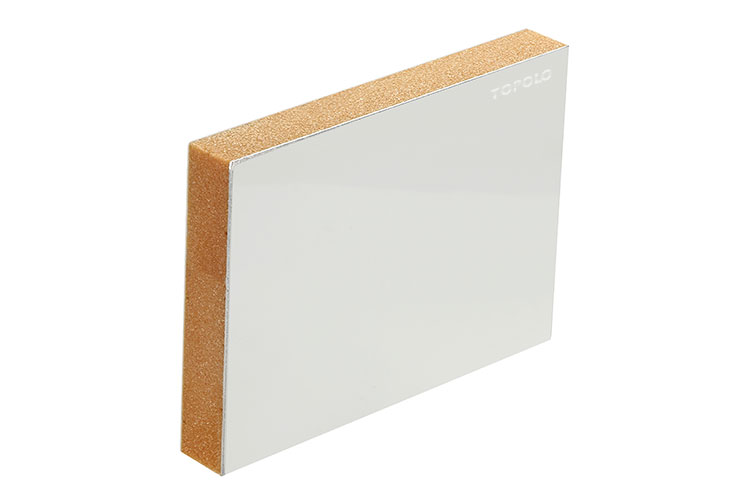
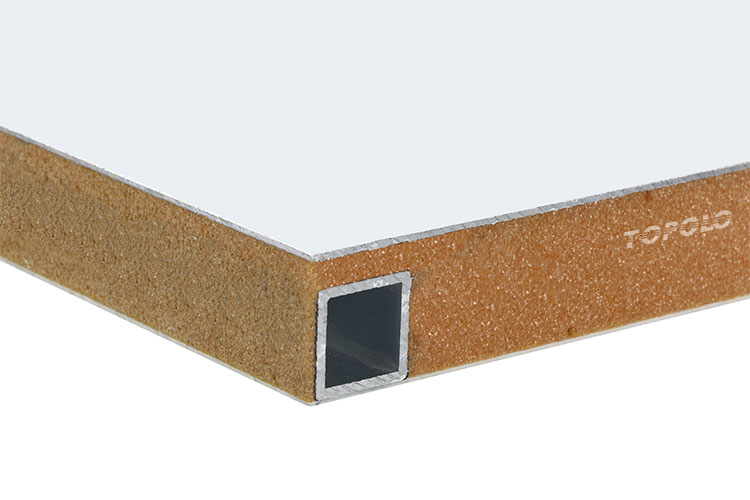
- High strength and impact resistance.
- Thermal insulation.
- Lightweight.
- Waterproof and moisture-proof.
- Easy to clean.
- Corrosion-resistant.
Specifications
- Thickness: 28mm. (Customized: 10-50mm)
- Width: ≤2.6m.
- Length: ≤12m.
- Outer Skin: 1.0mm smooth aluminum sheet.
- Inner Skin: 1.5mm woven roving FRP sheet.
- Core material: PVC (Polyvinyl Chloride) foam. (Density: 40-250kg/m³)
- Embedded Material: Aluminum tube.
- Adhesive: Unsaturated polyester.
描述
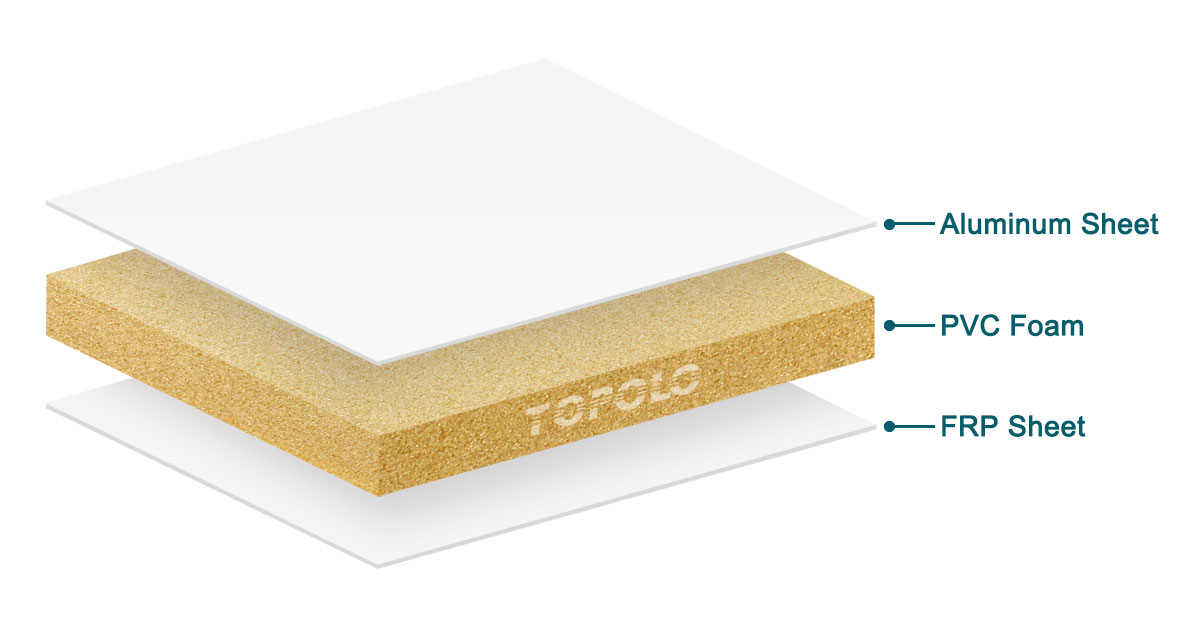
Product Features
- The outer skin is made of smooth aluminum alloy sheet, which is lightweight, corrosion-resistant, and can provide a durable outer protective layer for truck campers.
- The inner skin is made of woven-textured FRP sheet, which is waterproof and mildew-proof, keeping the living environment inside the truck camper clean and tidy for a long time.
- PVC foam has many advantages such as thermal insulation, light weight, pressure resistance, and flame retardancy. It is an ideal filling core material for lightweight and durable truck camper composite panels.
- The aluminum tube is embedded inside, which can greatly improve the compressive strength of the composite panel, resist external impact, and make the truck camper life longer.
Application Cases

